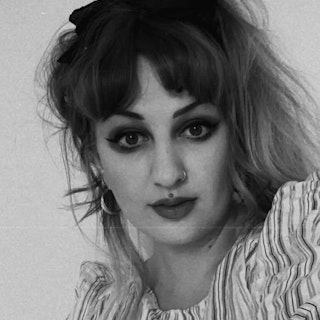Interflora’s plan to stand out in ‘sea of sameness’ and cultivate a more modern brand
We catch up with the flower delivery service’s marketing boss and the creative director behind its new campaign to find out all about the plan to re-energize the centennial brand.
Established in 1923 as a telegraph service between florists, Interflora has been struggling in recent years to stand out in a saturated market despite its storied legacy and the fact it can boast 58,000 affiliated flower shops in over 140 countries.
In an attempt to carve out a niche, the flower delivery network conducted a competitive pitch last year to find an agency to devise a brand campaign it hoped would engage a predominantly younger female audience. In mid-July, it appointed the relatively new indie agency Calling to lead the project.
Caroline Adams, Interflora’s marketing director, says of the brief: “We got ourselves into a space where we needed to modernize ourselves a bit for younger females. By young females, I mean ages 16 to 45. We just weren’t as on their radar or as desirable as we perhaps wanted to be, despite the fact our research told us that we actually had everything that they wanted.”
Data showed that what that group of people wanted was locality, sustainable products and a bespoke service – three things that Interflora could offer. The problem was a communications one.
Advertisement
Being a centennial brand means, of course, it wasn’t starting from scratch, but people had preconceived notions that had to change. “This is a very busy category; it never used to be it. But actually, if you look across the category, everything looks the same. If you take the logo off, you probably struggle to know who it was; you would probably struggle to know the difference. So, we talk about this sort of sea of sameness across the industry.”
What Interflora needed from an agency was a fresh pair of eyes on how it was showing up to consumers and an outside team that would challenge it. Adams says Calling was the shop that understood this most, adding that the team there was able to come up with an idea that would signal a big shift and make it more culturally relevant.
As she puts it, Interflora deals in emotions and beautiful moments, which is rich ground for an ad campaign, but while Calling challenged the brand to think about where it could push itself creatively, what impressed the marketer most was how the agency also thought beyond that, about future-proofing activations, with Adams saying their values lined up and that it was a natural fit.
Advertisement
The resulting campaign, ‘Say More,’ chronicles a cast of characters as they navigate life’s multifaceted journeys. In the 60-second spot, viewers witness a spectrum of emotions, spanning joy to grief, family connections to heartbreak and eventual reconciliation. These moments of emotion are interwoven by the presence of hand-made flower bouquets, each uniquely suited to its respective occasion.
Calling’s executive creative director and co-founder, Josh Tenser, explains that the idea behind the spot is that social media platforms have created a communication paradox, adding that people have never been more “connected,” but that with a growing mental health and loneliness epidemic have never felt more alone.
“We’ve become accustomed to expressing our emotions in a very cursory and dehumanized way. We should push against that.”
As an example, he says people who lose a loved one often post about it on Instagram which leaves their connections with a weird, uncomfortable moment of ‘liking’ the content.
“The software only allows us one way to react. Within that one behavior, you have the entire story of the brand, which is that it exists to help people communicate emotions with depth in a visceral way that is deeply lacking in today’s social media-obsessed world.”
Suggested newsletters for you
Everything you see in the campaign follows on from that strong point of view and embraces the notion that flowers often help people find words for complex emotions they might not be able to articulate.
Tenser stresses that, for Calling, the craft comes first, which was something it kept pushing Interflora to go harder on, even if it took more money and more time. This included bringing in production company Somesuch and American director Jazmin Garcia.
“Her work had this kind of hint of magical realism to it; there was always a twist or something that had a heightened sense of reality. It’s something that we wanted to bring to the film. Even though the situations are very familiar, we wanted to kind of heighten them all in a way visually and that suits the subject matter. Flowers are very magical objects.”
While you wouldn’t be able to tell from watching it, two-thirds of the filming took place in one location, a 10-bedroom house where every single room was styled completely differently – a real trick of location scouting, says Tenser. He adds that this allowed director of photography David Foulkes to create “little atmospheres” within the ad, some dark, some bright and beautiful and others vibrant and colorful, while some shots are stripped back and monochrome.
With the floristry scenes, the aim was to juxtapose all of that and bring something a little dreamier and more golden – “almost like a story within a story,” as Tenser puts it.
The spot goes live today and will also include dramatic out-of-home activations, all supported by Interflora’s in-house digital and social activity. It’s a big move for the brand, says Adams, explaining that it is spending 30-40% more on its advertising this year compared with last. “It’s a pivotal moment. It’s just the beginning of us launching this campaign. The opportunity that it presents and how we are driven and determined to get that message out there is exciting.”

